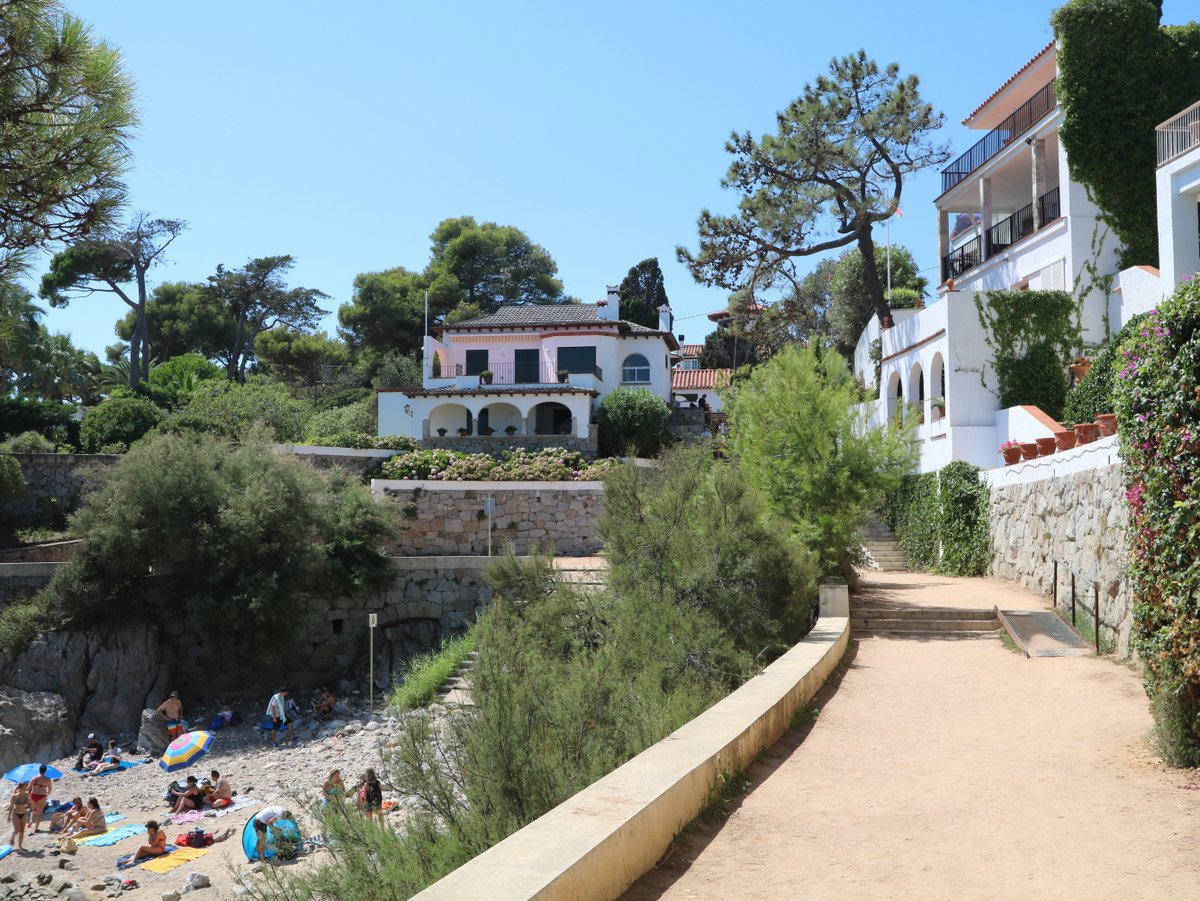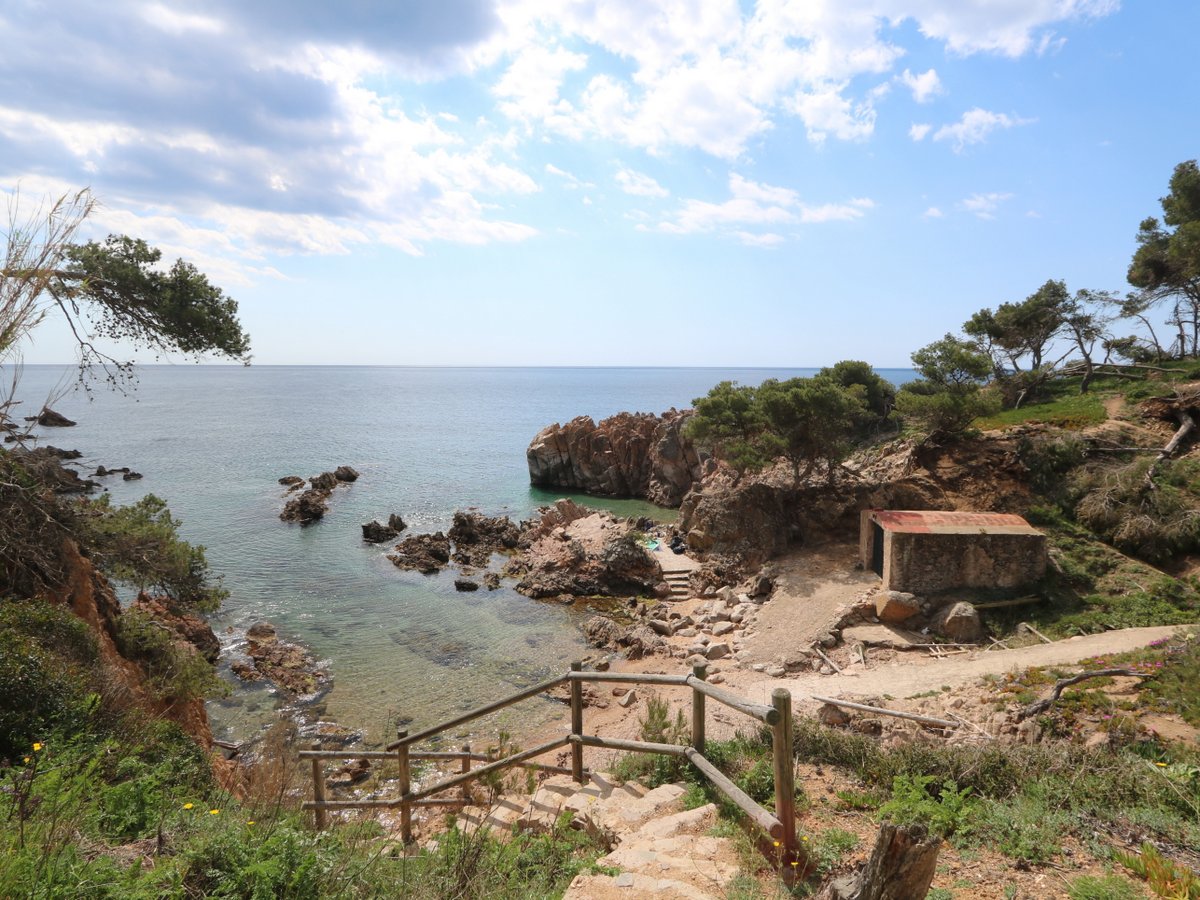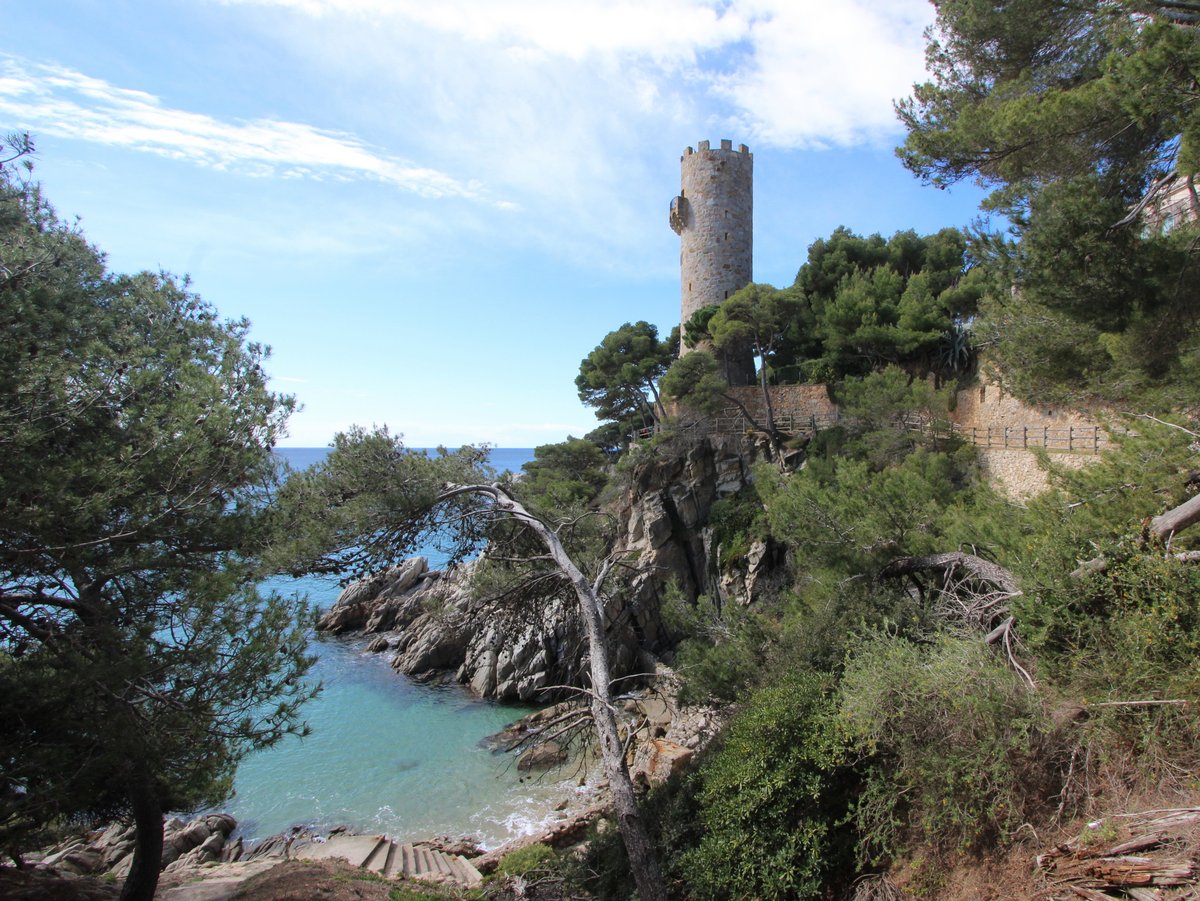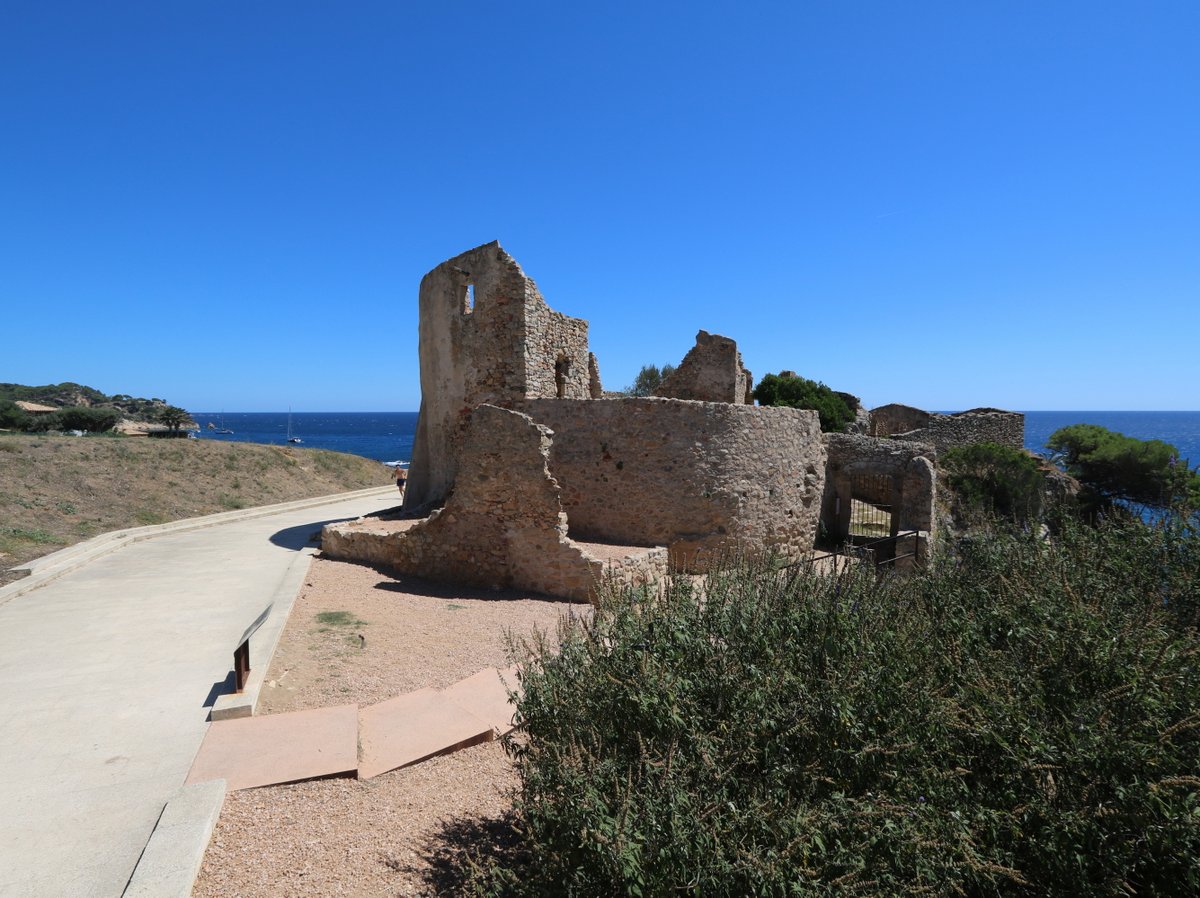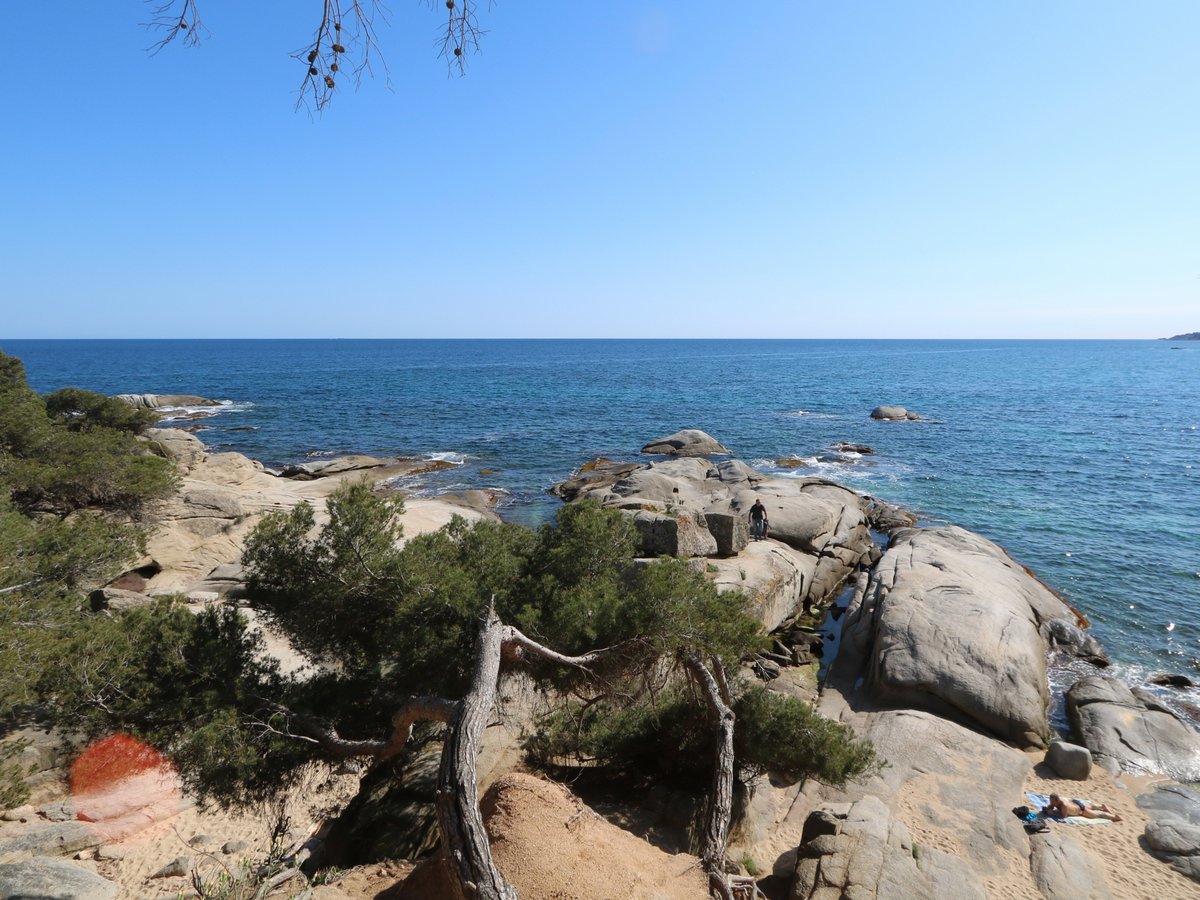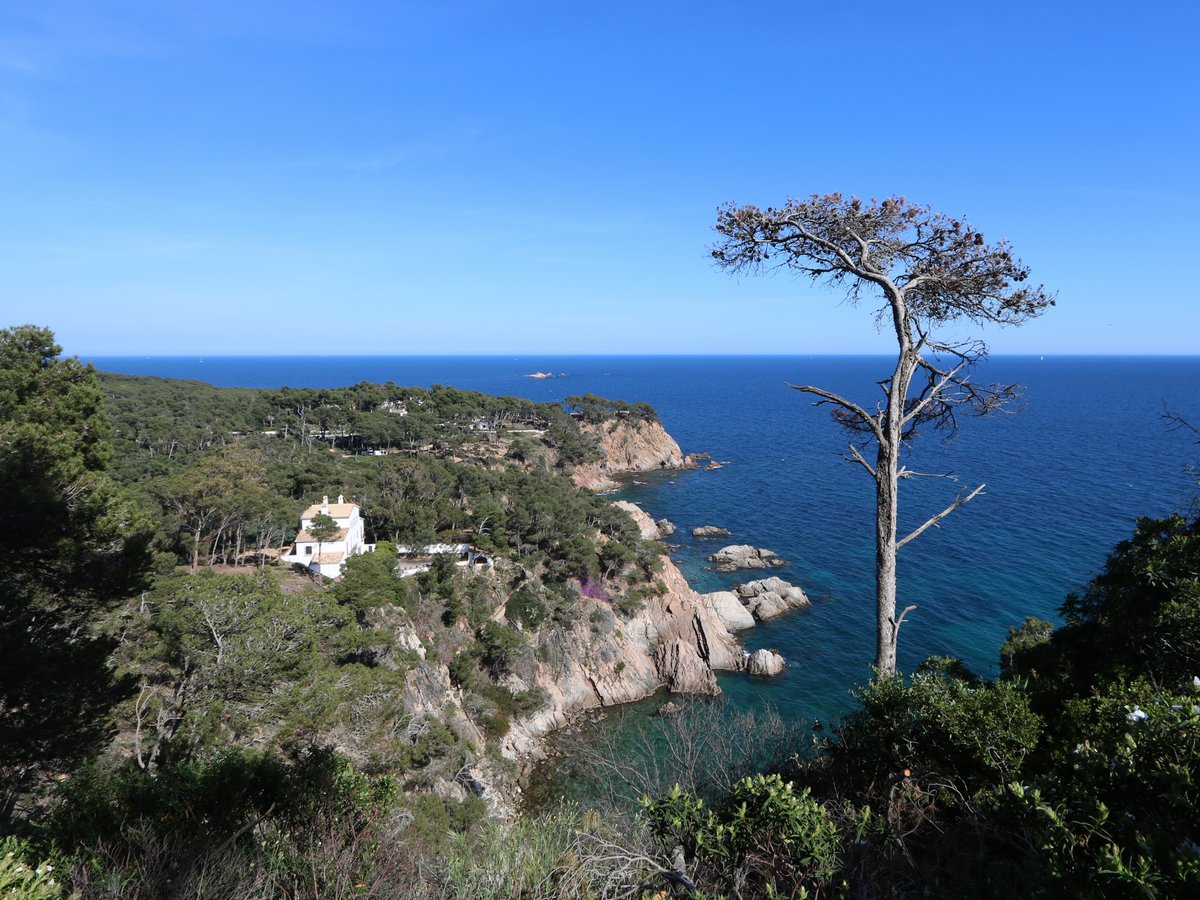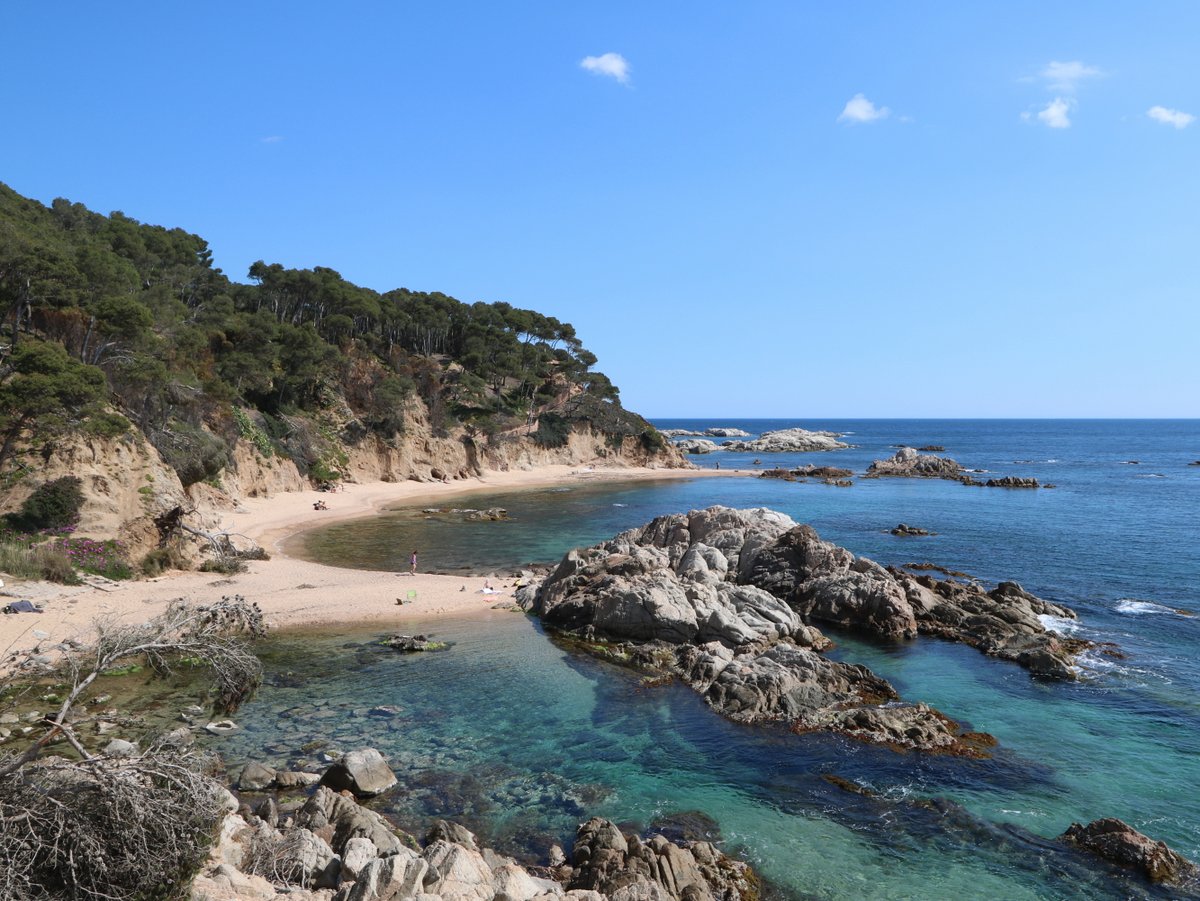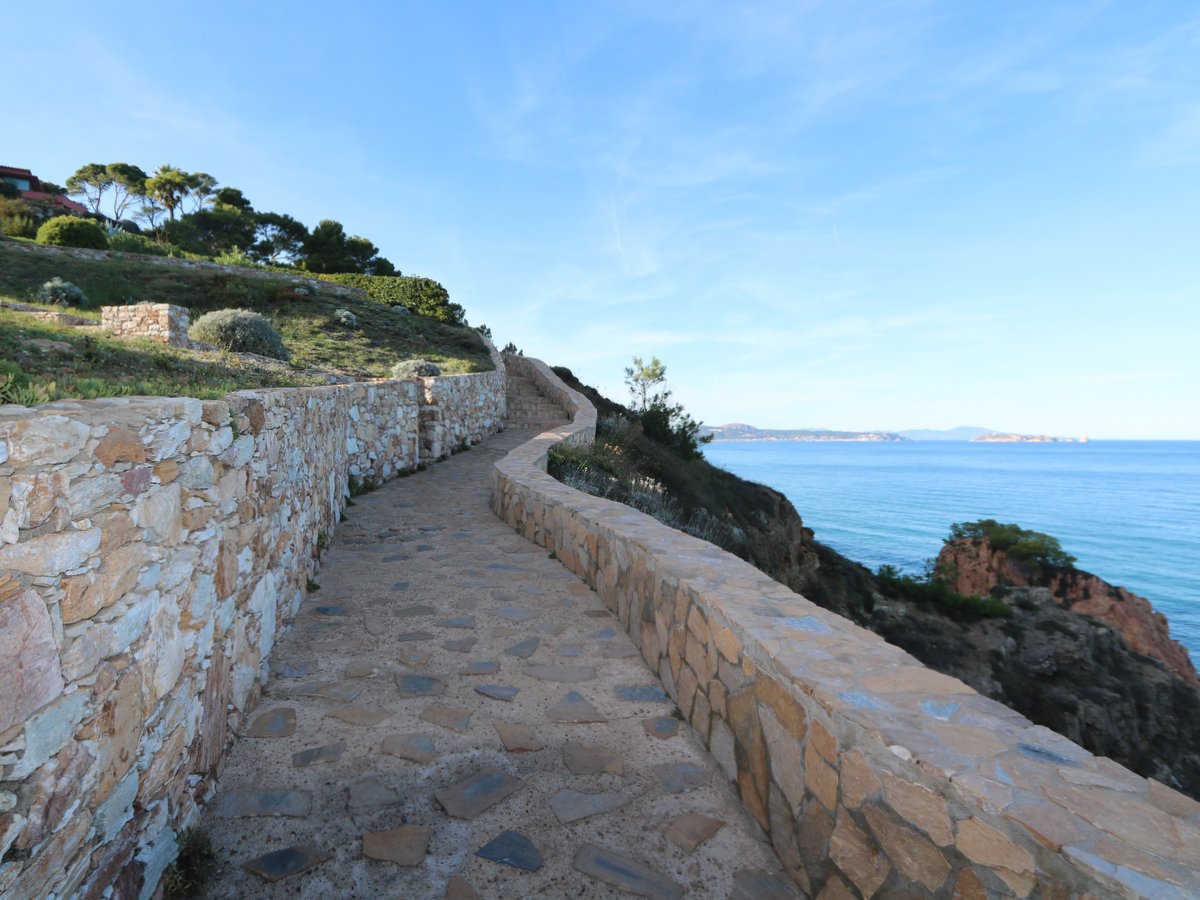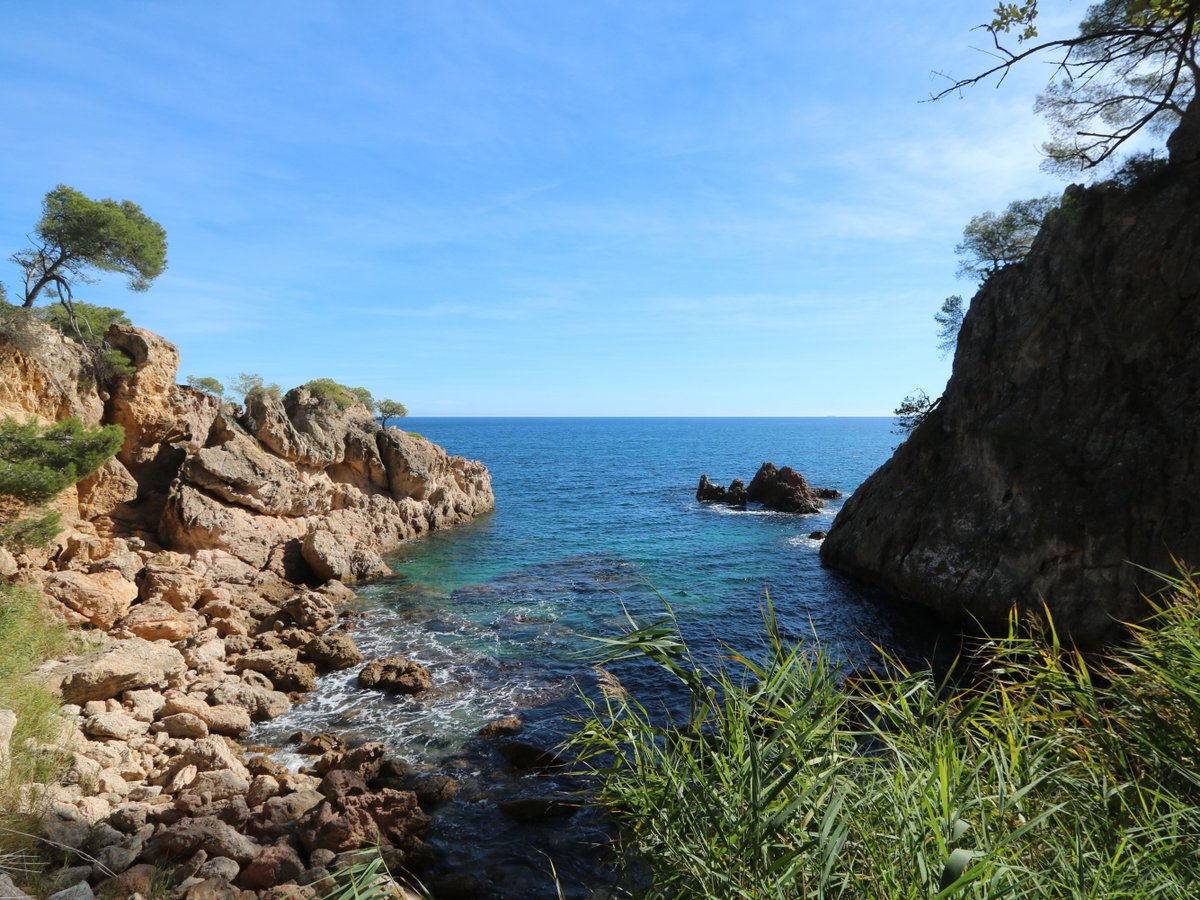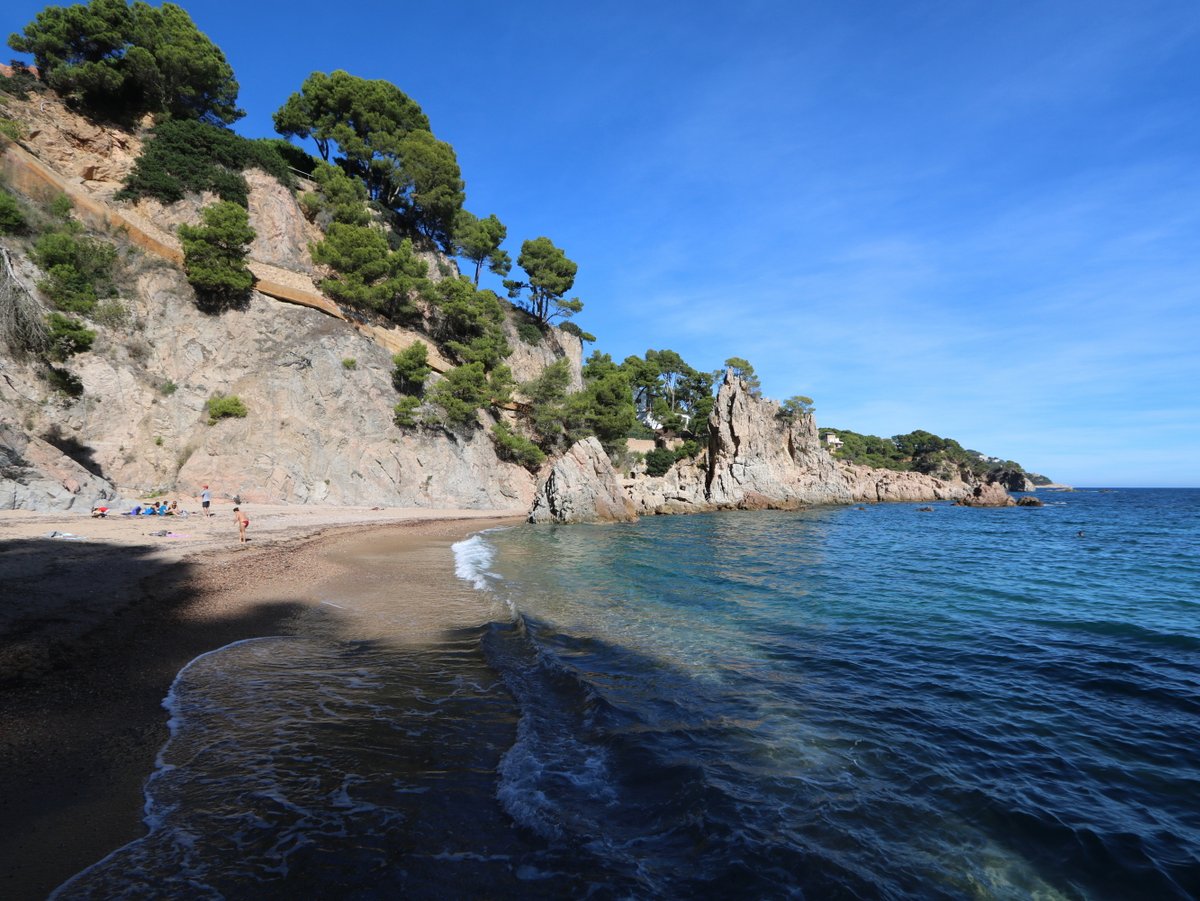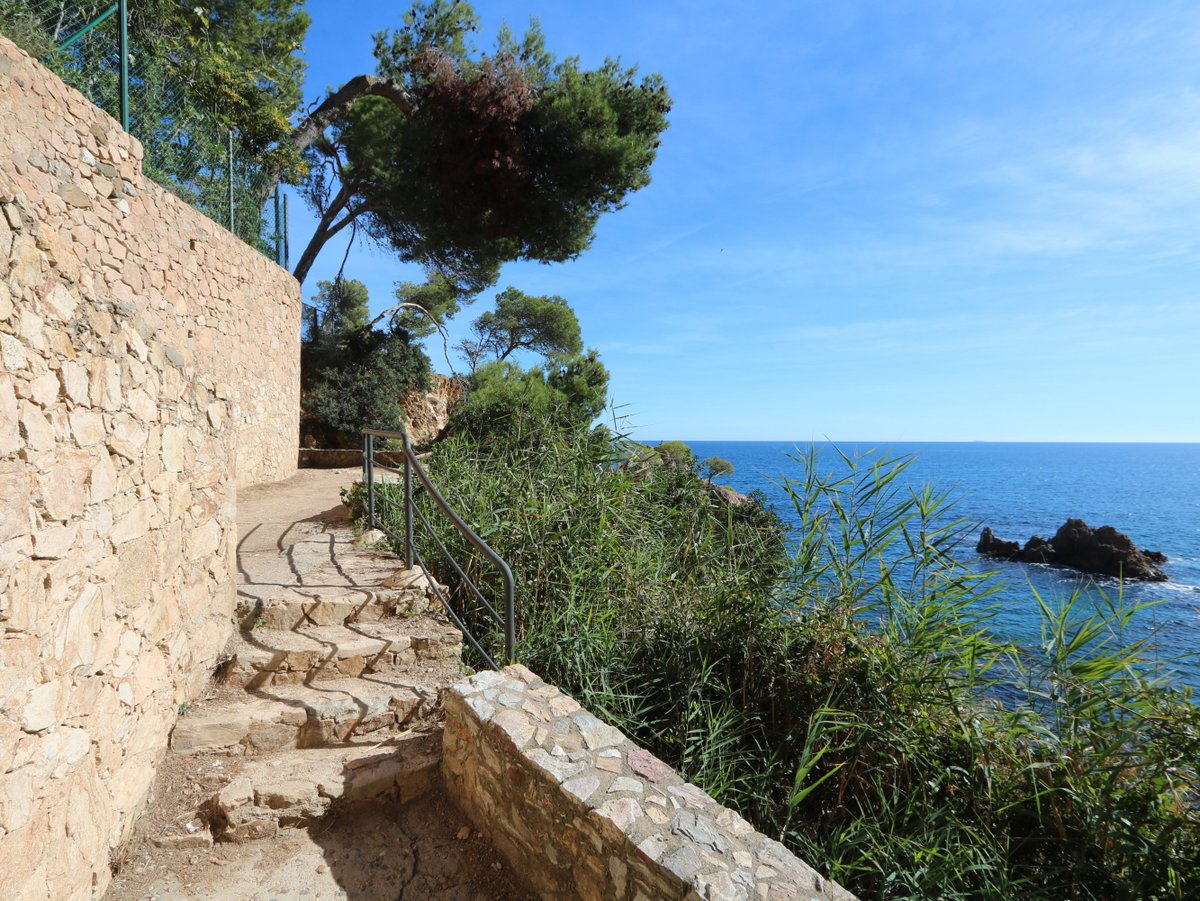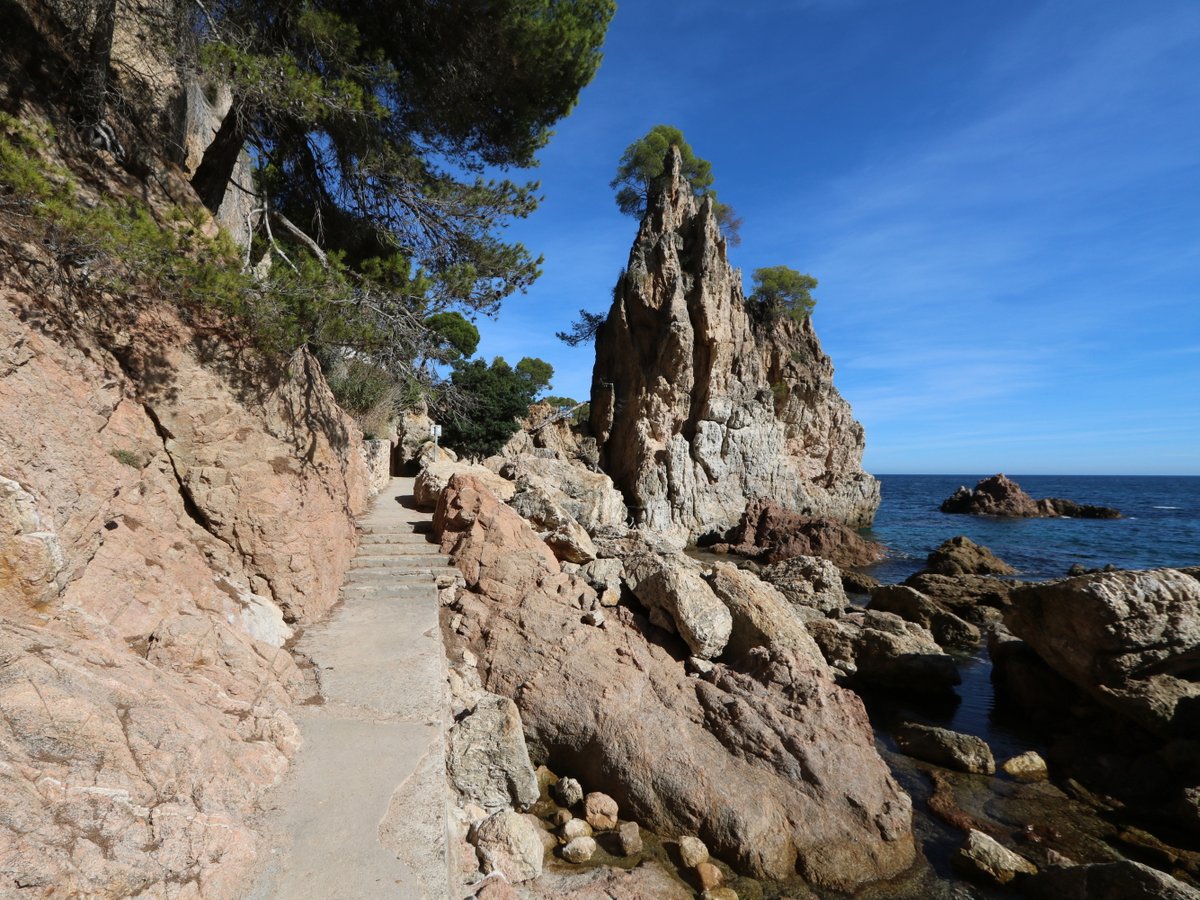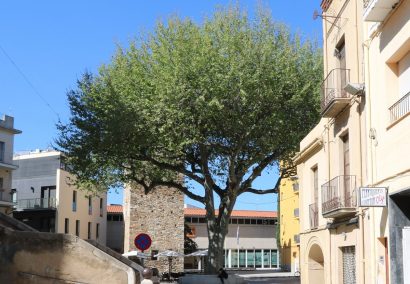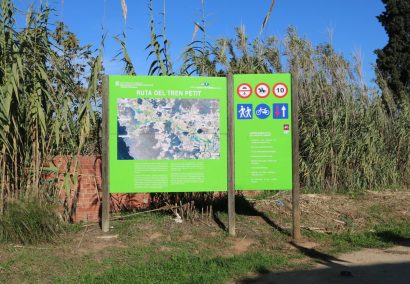Many summer guests of the Costa Brava resorts are familiar with this route: Camí de Ronda runs along the whole coast from Blanes to the south and Portbou to the north. Tens (in winter) and hundreds of people (in summer) visit its stone paths daily, enjoying the sea breeze and breathtaking views of Costa Brava, hiking down to picturesque coves or clinging to the rails high up instead. Many of Camí de Ronda hikers are definitely very grateful for the infrastructure and the quality of maintenance of this route.
After giving credit where it is due—to the top-notch navigation signs1, information boards and the immaculate state of the trails—it is worth noting that Camí de Ronda was created with far from tourists’ interests in mind. No one knows for sure when the first trails were laid out that would allow walking along the cliffs of the Costa Brava coast without danger of plunging to one’s death: three hundred, five hundred, a thousand years ago? Fishermen have been walking here since time immemorial. The government began spending money to maintain the trails in the 19th century, long before poor fishing villages of Costa Brava turned into wealthy seaside resorts. The war against smugglers transporting contraband along the shores was the reason instead.
The desire to avoid import duties on goods compelled entrepreneurial residents to seek out border crossings with no border guards in sight. What we most love about the Costa Brava today—its pine-covered rocky shores and cliffs, secret cozy coves—was highly in demand by smugglers, too. Commercial ships would anchor about a kilometre away from the shore, the goods would be loaded onto small boats which would then disappear in one of the coves that were far easier to reach by water, not on foot.
The most convenient spots for illegal activity of this sort were offered by the stretch of shore between Begur and Palamós: the beach Golfet to the north from the cape Cap-Roig; the cove Port d’Esclanyà in the pueblo of Fornells, the cave Cova del Tabac deep into the cape Cap dels Frares—these all were main points of transport of illegal goods.
In 1829, a carabiner corps called El Real Cuerpo de Carabineros de Costas y Fronteras de España was established to counteract the smuggling activity along the shores and by the border. In order for the corps to patrol safely, without risking falling down a cliff, additional funds were dedicated to the maintenance of the patrolling route. Hence the name — camí de ronda literally means a patrol route.
After the establishment of the Franco dictatorship in 1939, when Spain got cut off from the rest of the world until the end of the 1950’s, many imported goods disappeared from domestic circulation: penicillin, cigarettes, coffee, chocolate, makeup, jewelry to name just a few. Naturally, the demand for them didn’t decline, so the supply had to come from somewhere — the black market dealings flourished. Being an enormous headache for the state, illegal commerce had a positive effect on the development of Camí de Ronda, since bustling smuggling activity in the contraband-friendly coves of Costa Brava demanded increased patrols and, hence, more funding for the state of the patrol paths themselves.
Today, the times of anti-contraband struggle and the confrontations between coast patrol and the smugglers of Costa Brava are long behind us. The main users of Camí de Ronda are armed with photo cameras and smartphones instead of carbines these days… little do they know that they owe the well-maintained state of Camí de Ronda to the once-heated fight against illegal goods!
1)The first 12 stages of the route GR-92 almost exclusively follow Camí de Ronda.
